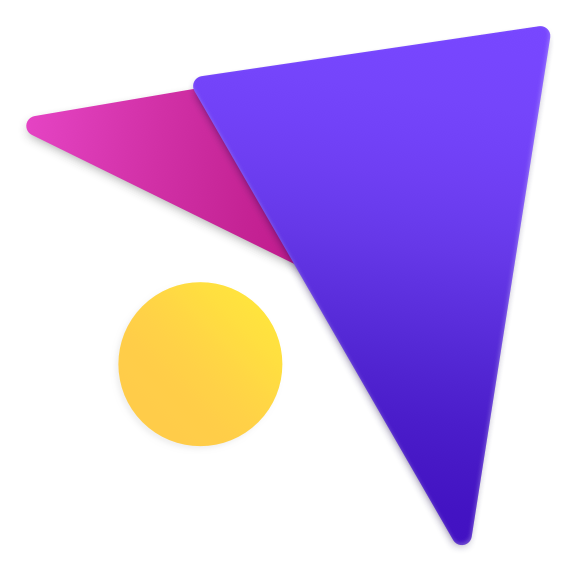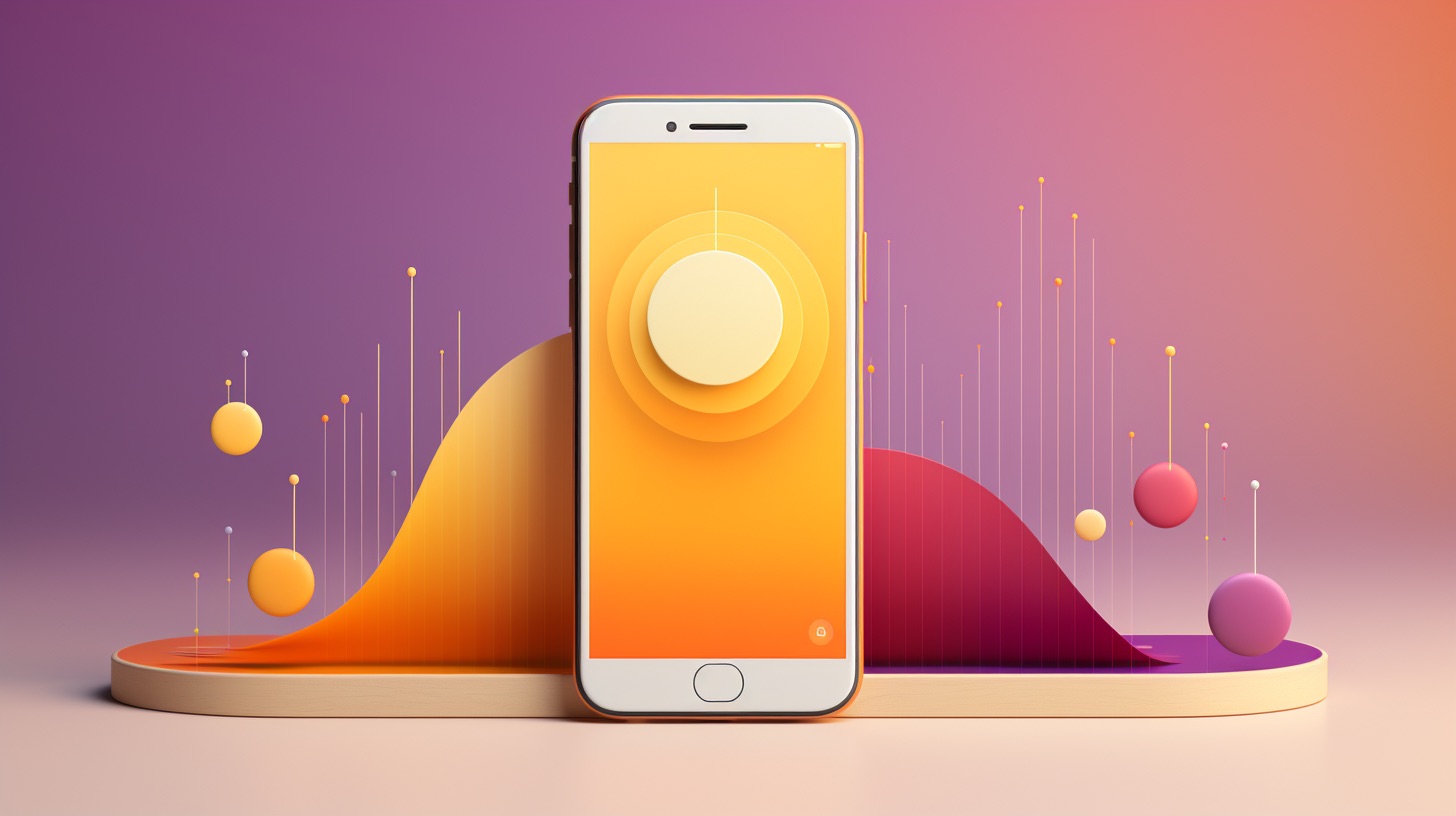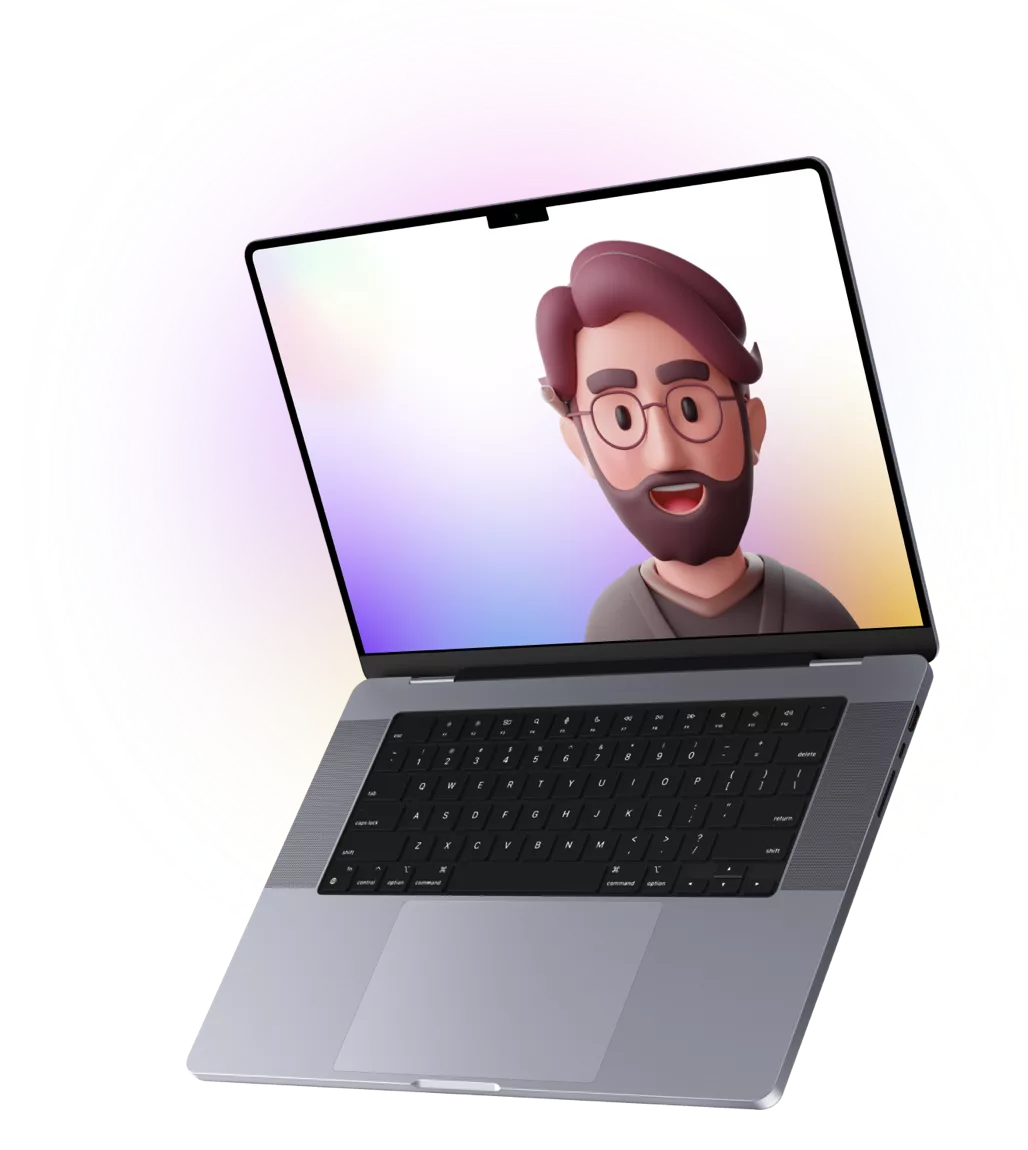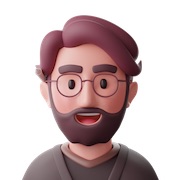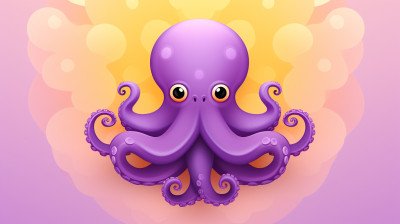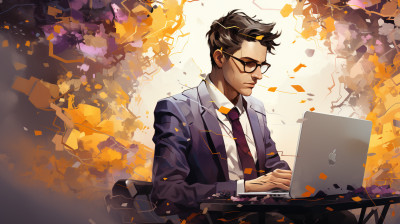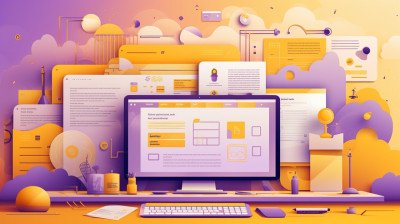In the ever-evolving world of web design, staying on top of visual trends is key to developing effective websites. Modern new website designs aren't just about aesthetics; they're potent tools that impact user engagement and conversion rates on landing pages. Interactive features can significantly influence website visitors. The latest buzz in new website designs is more than just inspiration for designers; they're shaping the future of how we interact with websites and their interactive features, especially on the homepage. From web designers to users, everyone feels the ripple effect of new website designs and modern website examples. These trends, like scrolling effects, are transforming websites. But it's not always about jumping onto every new website design trend; instead, it's identifying which top web design trends enhance your product and resonate with your audience through effective design elements. Let's delve into modern website examples, showcasing design trends and setting the pace for other websites and page designers to follow.
Increased Web Accessibility and User Experience
Web accessibility is crucial in new website design, and user experience, a key website design trend, plays a significant role in keeping site visitors engaged. This serves as website design inspiration for websites looking to enhance their appeal. Better accessibility can also boost your search engine rankings.
The Importance of Accessible Websites
Websites aren't just for show; they're tools that AI and designers should be able to use on every page, with examples to guide them. Having an accessible website means ensuring all users, regardless of their abilities or disabilities, can interact with your page easily. This task is crucial for website designers and can be assisted by AI technology. This isn't just about utilising AI for modern web design - it's about reaching as many people as possible through well-crafted websites and web pages. For instance, think about a modern website like Amazon. Web designers have crafted this new website so that even visually impaired users can effortlessly browse products across its web pages.
User Experience Keeps Visitors Hooked
User experience (UX) is the key to retaining visitors on your new website design. Websites should follow current design trends to enhance UX, especially when crafted by skilled designers. A great UX design by web designers makes your new website enjoyable and easy to use, leading to increased user engagement. AI examples further enhance this experience. Imagine web designers creating an app like Instagram: simple yet addictive because of its user-focused design, a trend in the industry.
Boost Search Engine Rankings with Accessibility
Search engines are clever these days! Designers know when a website incorporates design trends and delivers an excellent user experience, rewarding it with higher rankings. So, by making your site more accessible, web designers are helping out users and giving themselves a boost in the modern web design world. This approach aligns with web design trends and is favoured by Google and other search engines.
Enhancing Website Navigation and Usability
Improving navigation is one key design trend that enhances accessibility and usability on your new website, a crucial focus for designers. Clear menus, responsive web design by skilled designers, and easy-to-find buttons all contribute towards smooth navigation, which enhances overall UX too! These are the trends in web design that significantly improve user experience. Take BBC's website as an example; it's renowned for its straightforward navigation system, a design trend catering to millions of global visitors. This is the work of skilled designers who prioritise user experience.
Emphasising White Space and Minimalist Designs
Minimalist designs are taking the web design world by storm, with designers focusing on white space as a trend. These designs look sleek and modern, enhance readability, and improve website load times, a trend many designers are adopting.
The Power of Minimalist Design
The trend of minimalism in web design is about stripping away the unnecessary elements to focus on what's important. It's like modern web design – get rid of everything you don't need, and suddenly, your website design feels more spacious, tidy, and easier to navigate. This is one of the top web design trends in the web design world.
- "Less is more" is a modern web design trend. With fewer distractions, users can concentrate on your website design content, highlighting the skills of adept web designers.
- Faster load times: Without heavy graphics or complex layouts, your modern web design loads quickly. This is a key website design feature that web designers often focus on, following the latest web design trends.
- Web designers' modern aesthetic: Minimal designs have a clean, contemporary feel that appeals to many users.
A great example of minimalist design is Google's homepage. A simple text field for search input and a couple of buttons – that's it. This is the essence of modern web design. Website design like this is what web designers aim for, following the latest web design trends. Yet, it serves its purpose perfectly well.
The Role of White Space
White space (also known as negative space) is the empty area between different elements in a design. Consider modern web design as breathing room for your content – it gives each element some personal space, following web design trends, so they're not squashed together like sardines in a tin can!
- Enhances readability in modern web design: Generous use of white space, a current web design trend, makes text easier to read.
- Prioritises content: By isolating essential information with white space, a modern web design trend, you draw attention to it in web design trends.
- Clean aesthetic: Like minimalism in the web design trend, white space contributes to a clean, modern look.
The BBC News website uses white space effectively. Web design trend articles are easy to read because there's plenty of room around each paragraph.
Impact on Load Times
One often overlooked benefit of minimalist design is faster load times. Remember when you were young and tried keeping up with the web design trend, like running with a heavy backpack? Websites with complex designs or abundant images can feel sluggish and slow to load. But strip away the unnecessary weight (i.e., design elements), and suddenly, your website can sprint like Usain Bolt!
A Clean, Modern Aesthetic
Last but not least, minimalist designs with plenty of white space give your website a modern aesthetic. It's like giving your site a fresh design coat – it instantly looks more up-to-date and stylish.
- Timeless appeal: Minimalist designs always stay in style.
- Versatile design: Works well for all website designs, from blog layouts to e-commerce store interfaces.
Grid Systems and Unique Layouts
Grid systems are the bee's knees. They're like invisible lines in design that help place everything where it needs to be.
The Magic of Grid Systems
Imagine a design grid system as a game of Tetris, but instead of shapes falling from the sky, you've got sections of your website design. Your design menu, your main design content, even those funky geometric shapes you're using for decoration - they all fit neatly into these invisible grid lines of the design.
- Design is an effective tool for ensuring your content doesn't look like a dog's dinner.
- Design helps keep things tidy and easy on the eye.
Brand Identity Through Unique Layouts
Now, let's talk about unique layouts. Remember when I mentioned those geometric shapes? Well, they're not just there for show.
Design elements play a vital role in creating an identity for your brand. Think about it:
- Do you want your design to come across as hip and modern? Use complex gradients and diagonal lines.
- Want to give off a more sophisticated vibe? Stick with traditional borders and straight lines.
Your design layout can communicate more about your brand than words ever could.
Grid Role in Responsive Design
In this day and age, people aren't just viewing design sites on their computers anymore. They're using tablets, mobile phones, and even smart fridges! That's where responsive design comes into play.
A well-implemented grid system design ensures that no matter what device someone uses to view your site, it'll always look top-notch.
- No more worrying about design elements like text spilling over borders or images being cut off.
- Everything adapts smoothly thanks to our trusty grid lines.
Captivating Visitors with Unconventional Layouts
Lastly, let's touch on unconventional layouts. So far, we've been sticking to the safe side with our orderly design grids and standard shapes - but sometimes, you need to mix things up a bit in the design.
Unconventional layouts are like the wild child of web design. Design elements that are unpredictable and eye-catching can make visitors sit up and take notice.
- Shake up your design with gradients that bleed into each other or sections that overlap in unexpected ways.
- Break away from the standard design with a menu that doesn't just stick to the top of the screen.
Remember, while keeping your design organised with grid systems is important, feel free to let your creative flag fly with unique and unconventional design layouts. It's all about finding the right balance between structure and design creativity.
Incorporating Natural and Organic Textures
Natural Textures Add Depth
Flat designs can sometimes feel a bit, well, flat. But incorporate some natural textures into your design, and you've got a whole new ball game. We're talking about adding depth to your web design. Imagine the difference in design between a smooth piece of paper and one with handmade elements; it's like night and day.
One technique in website design is using textures from art or nature as inspiration for your site's background or text design. It's like giving your website a design that offers a tactile experience, engaging users on another level.
Fullpage Headers and Immersive Homepage Experiences
First Impressions Count
Full-page headers are the new black in web design. They're like the design of a high street shop's window display, grabbing your attention from the get-go. These design-centric landing pages make a statement, giving visitors an instant feel for what your design brand is all about.
For example, consider a website design with a full-page header showcasing stunning images of exotic travel destinations. This design immediately sets the tone, telling visitors they're in for an exciting journey.
The Magic of Immersion
Next up, we've got immersive homepages. These aren't just pages; they're experiences. Consider the design technique of parallax scrolling, where different page elements move at varying speeds, creating a sense of depth and movement in the design.
Imagine landing on a design-focused homepage that takes you on an interactive tour using horizontal scrolling through a product's design features. You'd be hooked right away! It's like being given control over your favourite video game design; you can't help but explore further.
Guiding Visitor Attention
Large headers in a design do more than look visually appealing; they guide visitor attention towards key information or actions within the design. A well-designed header can spotlight your latest product or service offering, guiding visitors to take action.
Say your business offers personalised content creation services. A hero section featuring snappy copy, compelling visuals, and an intuitive design could guide visitors to sign up for a free trial or request more details.
Longer Site Visits and lower Bounce Rates
Immersive experiences aren't just fun; they have real benefits too! They contribute to longer site visits and lower bounce rates. When visitors are engaged by an experimental navigation menu or captivating videos, they tend to stick around longer.
Remember our earlier example of the travel website? If each destination had its own immersive story attached to it, users would likely spend more time exploring these stories—boosting site visit duration!
Typography and Color Scheme Innovations
Typography and colour schemes are crucial in web design, affecting readability, aesthetics, brand perception, and user behaviour. Leveraging current colour trends can keep your site visually appealing.
Aesthetics Meet Readability
Typography is more than just words - it's an art form. It has a huge impact on how we perceive a website. Oversized typography is one trend that's kicking off.
Imagine massive letters filling your screen, creating a bold statement. It's not just about size, though; structured typography also makes text readable and engaging.
Consider kinetic typography as well - this involves text that moves or changes creatively. It's like the words are dancing on your screen!
Colour Schemes Influence Mood
Colour schemes aren't just there to look pretty; they set the mood of your site and can influence user behaviour. Bright colours inject energy into a page, while softer hues create a calming environment.
Custom illustrations combined with unique colour palettes can make for some truly innovative designs. Graphics overlaid with overlapping text add depth to pages, making them pop out at viewers.
For instance, you've probably noticed many sites using dark mode these days. That's because it reduces eye strain for users who spend long hours online.
Fonts Shape Brand Perception
The font you choose for your site speaks volumes about your brand. A playful font might suggest you're fun-loving, whereas something more structured may imply professionalism.
It's all about finding the right balance between style and readability – there is no point in having a gorgeous font if nobody can read what it says!
Don't forget about accessibility either – ensure fonts are clear enough for those with visual impairments to read comfortably.
Stay Current with Colour Trends
Keeping up-to-date with colour trends ensures your site stays fresh and appealing. You don't want to be left behind while everyone else moves forward!
A trendy colour scheme can instantly modernise a site, making it more attractive to users. Remember, trends come and go – what's hot today might be old news tomorrow.
So, keep an eye on the latest design blogs and websites for inspiration. But don't follow trends blindly – make sure any changes align with your brand identity and audience expectations.
Immersive 3D Worlds in Web Design
Engaging and Interactive 3D Elements
The web design world is evolving, folks! Interactive elements are one of the latest trends. These ain't your grandma's static images or videos. We're talking full-blown, immersive 3D designs that grab your attention and don't let go.
- Benefits? They create engaging, interactive experiences that make users feel like they're part of the action.
- Examples? Think about product showcases where you can rotate the item, zoom in on details, and see it from every angle.
These are not just pretty pictures but powerful tools for storytelling and user engagement.
Storytelling Through 3D Design
In this digital age, a well-told story can make all the difference between a forgettable website and one that sticks in people's minds. The role of 3D design in storytelling is becoming more prominent than ever.
- How so? By creating virtual environments that mimic reality, we can take users on a journey through our brand's world.
- Case study? Look at any modern video game. They use 3D worlds to tell complex narratives and engage players emotionally.
This isn't just fun and games; it's a powerful way to connect with your audience on a deeper level.
Impact of User Immersion
The real world doesn't hold a candle to what we can do with the web design world these days. With immersive 3D elements, we can create an environment that draws users in and keeps them engaged longer than traditional designs ever could.
- Stats? Websites with interactive features have seen up to a 70% increase in time spent on-site compared to their flat counterparts.
- Social proof? Big brands like Nike have started using these techniques to showcase their products more effectively.
This isn't just some passing fad; it's shaping up to be the future of web design.
Balancing Performance and Visual Appeal
3D elements can be a double-edged sword. They're visually stunning, sure, but they can also slow down your site if not implemented correctly. It's crucial to find the right balance between performance and visual appeal.
- Tips? Use optimised graphics, limit the number of interactive features on each page, and make sure your site is mobile-friendly.
- Example? Website examples like Apple's product pages manage to incorporate 3D elements without sacrificing load times.
This isn't just about looking good; it's about providing a seamless user experience from start to finish.
Adding Depth to Web Design with Microanimations
Micro animations are vital in web design, guiding users through interactions and enhancing interactivity. They breathe life into static pages without distracting from the content.
Guiding Users Through Interactions
Micro animations play a pivotal role in modern web design. They're like tiny tour guides, subtly directing your journey on a website.
For instance, consider hover animations. You move your cursor over a button, and it changes colour or shape slightly. This small action tells you that something will happen if you click.
- A shopping cart icon might jiggle to remind you of items left unpurchased.
- A download button could morph into a progress bar when clicked.
These little nudges guide the user's actions, making navigation more intuitive.
Enhancing Perceived Interactivity
Subtle animations can make a webpage feel more responsive and interactive. It's all about the perception of depth they create.
Imagine scrolling effects, for example. As you scroll down, elements slide in or fade from different directions, creating an illusion of movement and depth.
- An image might zoom out as you scroll down, giving the impression of moving away from it.
- Text blocks could slide in from the sides as they come into view.
Such animations make your interaction with the site feel more dynamic and engaging.
Bringing Static Pages to Life
Small animations can transform static pages into vibrant, living entities. Think about those sites where images subtly shift as you move your cursor around.
It's not just about visual appeal either; these micro animations can also serve practical purposes:
- Animations can draw attention to important elements like calls to action.
- They can provide feedback on user actions (like showing a tick mark when a form is successfully submitted).
In essence, micro animations give websites character while improving usability simultaneously.
Adding Depth Without Distraction
The key to effective use of microanimations is subtlety. They should add depth and interactivity without becoming a distraction.
Here are a few tips to strike that balance:
- Keep animations simple and quick.
- Use them sparingly, only where they serve a purpose.
- Ensure they align with the overall design style of your site.
Integration of Chatbots, VR/AR, and Enhanced AI
The digital world is rapidly evolving. Let's explore how chatbots, VR/AR, and enhanced AI are shaping web design trends.
Chatbots for Instant Customer Support
Chatbots aren't just a fancy tech gimmick anymore. They're a virtual companion that provides immediate customer support 24/7.
- Chatbots can answer customer queries instantly.
- They can handle multiple customers at once, reducing wait times.
For example, H&M uses chatbots to provide personalised style advice. This has boosted customer satisfaction rates significantly.
VR/AR Creating Immersive Experiences
Virtual Reality (VR) and Augmented Reality (AR) are no longer confined to gaming. They're transforming the way we shop and learn online.
- AR allows customers to virtually 'try on' products before buying.
- VR creates immersive learning experiences that increase engagement levels.
IKEA's AR app lets you visualise furniture in your own home. It's like having a personal interior designer!
Enhanced AI Personalising User Experience
Artificial Intelligence (AI) isn't some far-off fantasy; it's here now. It's being used to create highly personalised user experiences based on behaviour data.
- Machine learning algorithms analyse user behaviour patterns.
- These insights help tailor content according to individual preferences.
Netflix uses this technology brilliantly with their recommendation system. The more you watch, the better the recommendations get!
Futuristic Web Experience
What happens when we combine chatbots, VR/AR and AI? We get a futuristic web experience that feels like something from a sci-fi movie!
These technologies work together seamlessly:
- Chatbots provide instant support while you browse or shop.
- AR lets you try things out virtually.
- And all the while, AI is working behind the scenes, learning about your preferences to make your next visit even better!
Dominating Web Design Trends for 2023
A Recap of Influential Web Design Trends
Web design is a fast-paced world. The top web design trends of 2023 were all about immersive user experiences and interactive elements. We saw the rise of dark mode, 3D graphics, and augmented reality (AR) in website designs.
- Dark mode: It's easier on the eyes and battery-friendly.
- 3D Graphics: They make websites more engaging.
- AR: It offers unique, interactive experiences.
Predictions for Future Web Designs
Looking ahead, we can expect some exciting shifts in popular web design trendsfor 2024. One key direction to watch out for is the use of micro animations. These small, subtle animations guide users through a site or draw attention to important elements.
Another anticipated trend is the use of minimalistic designs with bold typography. As they say, less is more! This design trend prioritises functionality over aesthetics.
- Micro Animations: They improve navigation and engagement.
- Minimalistic Designs: They simplify user interface and enhance usability.
Early Adoption Equals Competitive Advantage
Jumping on these trends early could give businesses a serious edge over their competitors. The digital landscape is crowded, so standing out from the crowd isn't easy – but it's possible with innovative web designs!
For example, companies that adopted VR/AR technology in their website designs early have seen increased customer engagement rates.
Evolution Beyond 2023
However, the evolution of web design continues beyond these trends. Moving beyond 2023, we might see more integration of technologies like AI and machine learning into website designs.
Imagine websites that learn from your browsing habits and tailor content specifically to you – now that's what I call personalised service!
Upcoming Web Design Trends for 2024
So, there you have it! The future of web design is looking more exciting than ever. From minimalist designs focusing on user experience to integrating advanced technologies like VR/AR and AI. It's clear that the web design landscape is set for some major shake-ups in 2024. But remember, no matter how flashy or high-tech a website might be, it's all about making your users' journey as smooth and enjoyable as possible.
Don't be afraid to experiment with these trends and see what works best for your brand. After all, innovation is at the heart of excellent web design. Now, go out there and start creating some fantastic websites!
FAQs
What are the benefits of having a well-designed website?
A well-designed website can increase customer engagement, improve user experience, boost your online presence, and ultimately drive more sales.
How does minimalist design improve user experience?
Minimalist design reduces clutter and focuses only on essential elements. This makes navigation more accessible for users and allows them to find information quickly.
Why is integrating advanced technology like VR/AR important in web design?
Integrating technologies like VR/AR can provide an immersive user experience that goes beyond traditional browsing. It can make interaction more engaging and memorable.
How do micro-animations add depth to web design?
Micro-animations are small animations that guide users through interactions on a website. They help draw attention to important elements, provide feedback, and enhance the overall visual appeal of a site.
What role does typography play in web design?
Typography plays a crucial role in setting the tone of your website. It communicates who you are as a brand while also ensuring readability and usability.
